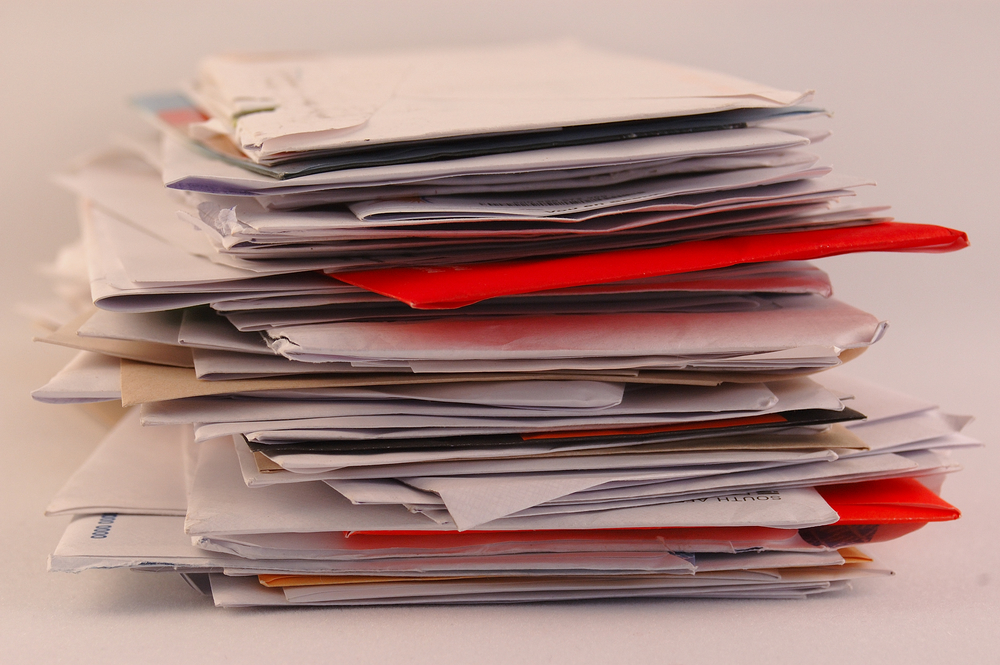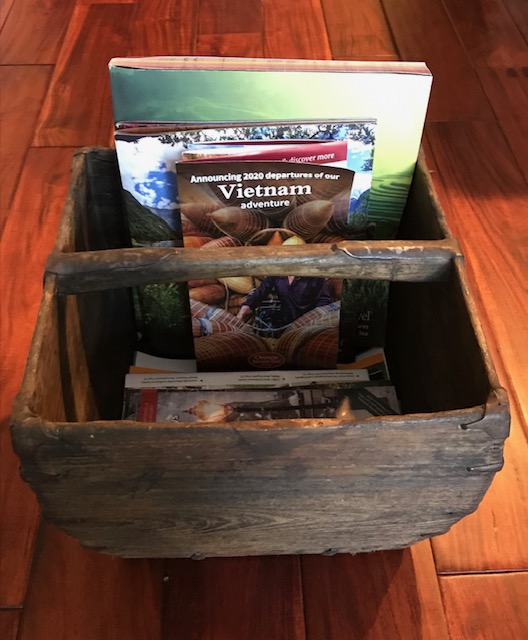

By Russell Pitcairn, The Junkluggers, (215) 779 1644
Recently, I asked my network to share several of their favorite books. Below is a list of inspirational books along with their own key takeaway. Feel free to comment if you have read any of the books below. Let me know if you have a favorite book that has inspired you. Please enjoy!
“Who Moved My Cheese” by Spencer Johnson
Linda’s Key Takeaway: Be Flexible
“The Tipping Point” By Malcolm Gladwell
Linda’s Key Takeaway: Keep your eyes and mind open at a high level.
“The Purple Cow” By Seth Godin
Nate’s Key Takeaway: Companies that have grown into large successful organizations did so by offering a remarkable service or product. In order to succeed in the same industry, you must offer SOMETHING ELSE that is remarkable, stands out, and talks to the people. It’s the only way to be successful in the long run.
“The Go Giver” By Bob Burg and John David Mann
“A Complaint Free World” By Will Bowen
Linda’s Key Takeaway: Be aware, stop and surround yourself with those that come up with solutions…not complaints.
“Wild: From Lost to Found on The Pacific Crest Trail” By Cheryl Strayed
Linda’s Key Takeaway: Get out of your comfort zone.
“Resilience” By Eric Greitens
“Never Split the Difference” By Chris Voss.
Russell’s Key Takeaway: If someone gives you a response you do not like, ask open ended questions like “Why?” or “How?” This may reveal key information, or may get the other person to come up with a different response.
“One Small Step Can Change Your Life” By Robert Maurer
Linda’s Key Takeaway: Move with intention and control.
“Welcoming the Unwelcome” By Pema Chodron
Darla’s Key Takeaway: The time we live in is a fertile ground for training in being open-minded and open-hearted. If we can learn to hold this falling apart-ness without polarization and without becoming fundamentalists, then whatever we do today will have a positive effect on the future.
“A Fine Mess” By TR Reid
Blair’s Key Takeaway: Understanding America’s tax system and an effective way to restructure it. Lower tax rates but eliminate deductions/ways people avoid them, but broaden the tax base/tax on spending of earnings.
Day 365 + ???? (who’s counting) of the pandemic and it seems like everyone is decluttering. We’re all trying to hold true to our reoccurring New Year’s Resolution to ”Get Organized.” Getting Organized can mean different things to us but it usually involves some sorting and culling of categories of stuff.
In our experience, there are always 3 decision buckets your stuff will fall into:
Our NAPO colleague, Barbara Hemphill, coined this brilliant definition: Clutter is Postponed Decisions.™ Clutter builds when we postpone decisions about:
• Do I really love it?
• Will I use it?
• Does it fill a void in my life?
• If I’m keeping it, where should it live?
While you do need to decide about your stuff, you do NOT want to stop the decluttering process to ponder each individual item.
Our time-saving advice is DEFER your decision for the “maybes” and “I don’t knows.”
These tricky decisions deserve attention — but NOT while you’re in the initial stages of rapid-fire, gut reactions to your stuff.
If you stop your intuitive process of deciding Yes, No, Maybe you won’t get through the whole category of stuff and you won’t see visible signs of progress. This will feel depressing and probably halt the whole decluttering process.
Follow our advice and schedule time with yourself — on a separate day — when your mind is fresh and you’ll taste sweet success. Technically, it’s called time chunking. In practice:
• One organizing session is dedicated to quick, visceral decisions.
• Another for contemplative, thoughtful and reasoned thinking.
Permission granted to defer your decisions on all of your “maybes” and “I don’t knows” — not because pushing off until tomorrow is a winning strategy. Permission granted because setting aside the necessary time to consider what deserves a place and space in your life is worthy of your full attention. In this case, deferring the decision is a smart move.
Wishing is a good thing! It creates a vision of what we’d like for the future. Often the vision motivates us into action to make it come true. But the tricky part about a wish, compared to a goal, is sometimes we want our wish to magically happen without our taking action. Can you relate?
Here are some examples of Wishful Thinking that might be contributing to the clutter in your home:
The clothes you wish you could get into two or three sizes down.
The workout equipment you wish you would use.
The craft projects you wish you’d have to time to work on.
The second home you wish you could buy.
Charitable shops have been closed for some time due to the pandemic, and now that they’re opened, they are inundated with goods. Some people are reluctant to donate to charities for fear their items will be thrown in the trash. I’ve been told by Goodwill workers that they are storing items in trailers, however that statement is unverified. Another option for items you wish to sell or give away for free are websites like Freecycle.org and CraigsList.com, or local pages on Facebook Marketplace. Since summer is here, you can find ways exchange items with social distancing.
Wishful Thinking can be shifted to Realistic Thinking. If you have trouble getting started, consider the help of a professional organizer. Many are doing virtual organizing and can help you shift your thinking so letting go is easier. YOUR WISH FOR A CLUTTER-FREE HOME CAN COME TRUE!


While helping clients organize their papers, they express concern that they’re doing something wrong when handling them more than once. What they’re unknowingly asking about is the OHIO (Only Handle it Once) rule.
Keep in mind, though, that OHIO is a guideline, not meant to always be applied. The intent is to Only Handle It Once, or as few times as necessary to completion.
Scenario 1
Scenario 2:
We don’t stop to think about how many times we handle the same papers — and how much time we waste. A lot!
Here’s a favorite productivity tip from David Allen’s book, Getting Things Done. His Two-Minute Rule states that if it takes less than two minutes, do it now. That doesn’t mean two minutes exactly, but just a few minutes to complete quick tasks. Brilliant!
Contact a pro organizer if you want to learn how to get more done in less time.
© 2019 Adriane Weinberg. All rights reserved.
There are times, I am sure, when you have an extra 15 minutes where you just want to sit, relax, and take a few deep breaths. There is certainly nothing wrong with self-care. However, self-care can also take on another form where you want to use those extra 15 minutes to get something done in your home or office.
In my world, of course, it has to do with de-cluttering and organizing. There have been a couple of times recently where I took that 15 minutes with a client and myself to do just that.
A client of mine moved into assisted living several months ago. During one of our sessions, as I was helping her unpack and organize, I had some extra time. I went through one of her end table drawers in the living room and was able to recycle and trash 95% of what was in the drawer – old catalogs, old address labels, etc. Now, I could make room for other items that were important for her to have nearby in her new life.

In my own life, I love to travel. I always have travel articles and catalogues that I keep in an antique rice holder box (pictured above). When I started going through my collection, I was amazed at what I could recycle – articles and catalogs that went back to 2016. Since the box never looked like it was totally overflowing, I just kept putting more articles and catalogs in it. As with my client, I was able to recycle 95% of what I had stored.
This led me to think what we can all do in 15 minutes to maintain our organizational systems. Maintenance and persistence always seem to be a huge challenge in the organizing world. Developing a system or process is 1 part of the project. Another part is maintaining or tweaking what you’ve already developed.
Consider what you can do in 15 minutes. You never know what you’ll find unless you go through these areas:
On any given day, we all make choices in our lives as to what to do with our time. With those extra 15 minutes that you have, you could sit back and relax or go through an area of your home or office to see what you no longer need. What is your choice today?
Ahhhh, can you hear it? Stop. Listen closely. Is that the sound of an empty house? Oh my goodness! Are you actually at home – alone? That’s right folks. The kids are back to school and that morning cup of coffee hasn’t tasted this good in almost longer than you can remember.
Thank you Fall for showing up – right in time to save us from completely losing any semblance of sanity! While you sit for an extra 5 minutes, enjoying the sound of silence and taking another sip-o’-joe, you may begin to look around.
What you are looking at is the aftermath of summer:
Amidst everyone else’s debris, there are some of your own items that need attention, yet it’s hard to know which and where they are. Here are 3 suggestions from a Professional Organizer and mom of three grown children:
Take these three small steps and enter Fall confidently prepared to harvest the rewards of the season.
